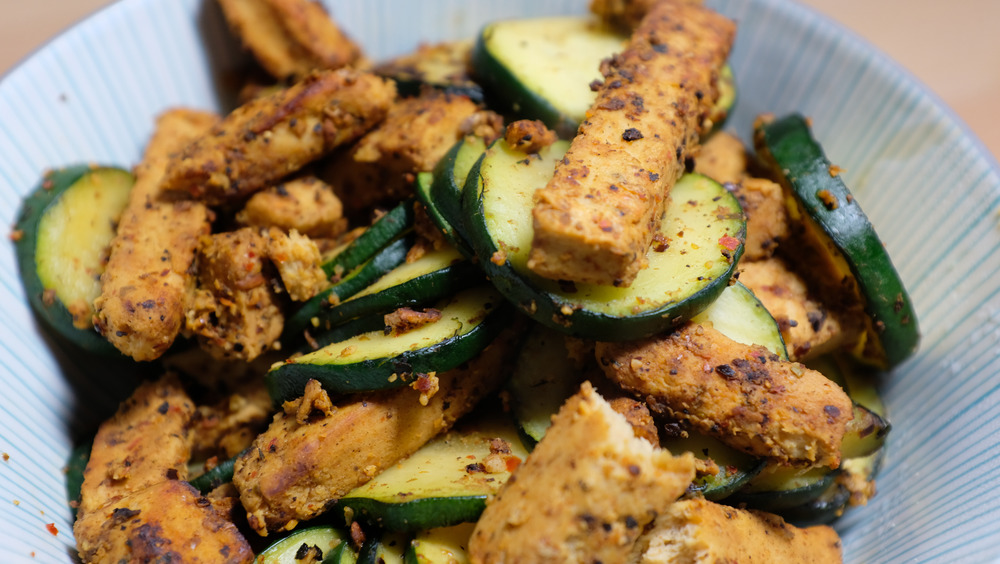What Is Mycoprotein Really Made From?
Mycoprotein sounds like a food out of a sci-fi novel, but it's a real-life meat substitute that has been sold in the United Kingdom for 40 years and in America for the last 20. It's flown under the radar for the most part, but as more people search for healthy food options, mycoprotein has been pulled into the spotlight.
According to the BBC, 1/2 cup (100 grams or about 3.6 ounces) of mycoprotein has 11 grams of protein and 6 grams of fiber. For comparison, 100 grams of grilled chicken has 30 grams of protein and 0 grams of fiber. So it's no wonder people are paying more attention to mycoprotein-based brands like Quorn and wondering where exactly this product comes from.
The short answer could be a little hard to stomach: fungus. Mycoprotein is a highly treated and processed form of fungal protein. Of course, anyone that likes mushrooms is going to shrug off that fact. After all, what's the difference between one form of edible fungus and another? For those with mold allergies, however, the difference is pretty important.
Mycoprotein's origins
Although mycoprotein is made from fungi, it is not actually mushroom-based. Instead, it is grown from Fusarium venenatum, a type of mold typically found in soil. Scientific American reports that British industrialists in the '80s developed a way to process the strain into a protein source. They worried that the earth could not sustainably produce enough protein to feed the growing population. Mycoprotein was their answer to the problem.
And to a degree, it worked. Mycoprotein is high in fiber and protein, both of which leave people feeling sated, while using less land for production than traditional meat sources. Unfortunately, there are some potentially-serious drawbacks as well.
According to Quorn's own website, their main line of products is neither gluten-free nor vegan because they use both eggs and gluten as thickeners when forming the raw mycoprotein into packaged meat replacement.
However, the Center for Science in the Public Interest raised a more serious concern. In 2018 they updated a statement warning that some consumers may experience serious side effects after eating Quorn products. These include dizziness, shortness of breath, upset stomach, and vomiting. Serious reactions have even led to hives and anaphylactic reactions.
Such reactions are likely due to mold and fungal allergies which often go undiagnosed until someone is exposed to the allergen. So if you're thinking of trying mycoprotein, make sure to get an allergy test first. Once that clears, however, mycoprotein might just be the high-fiber meat substitute you've been looking for.


